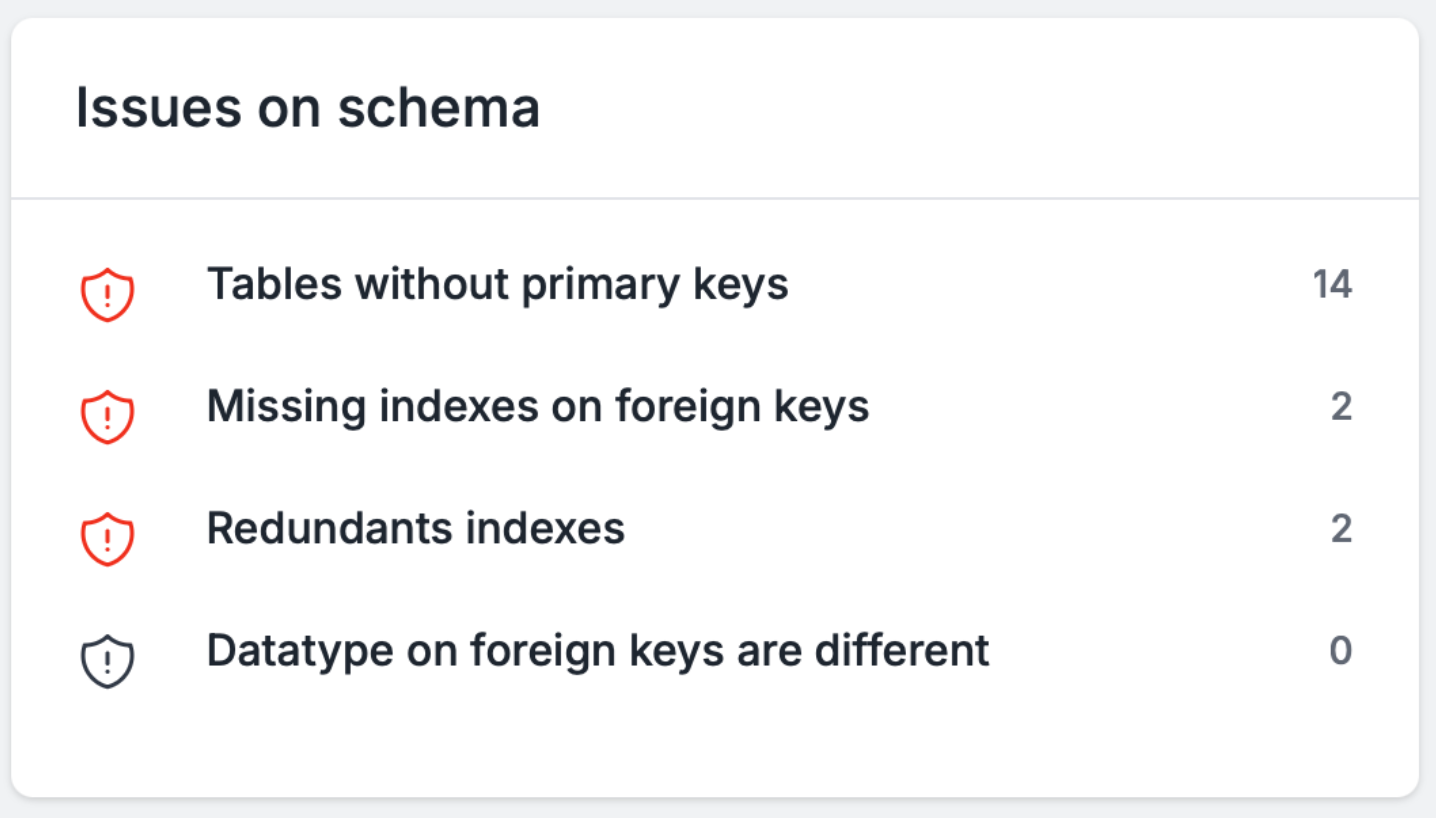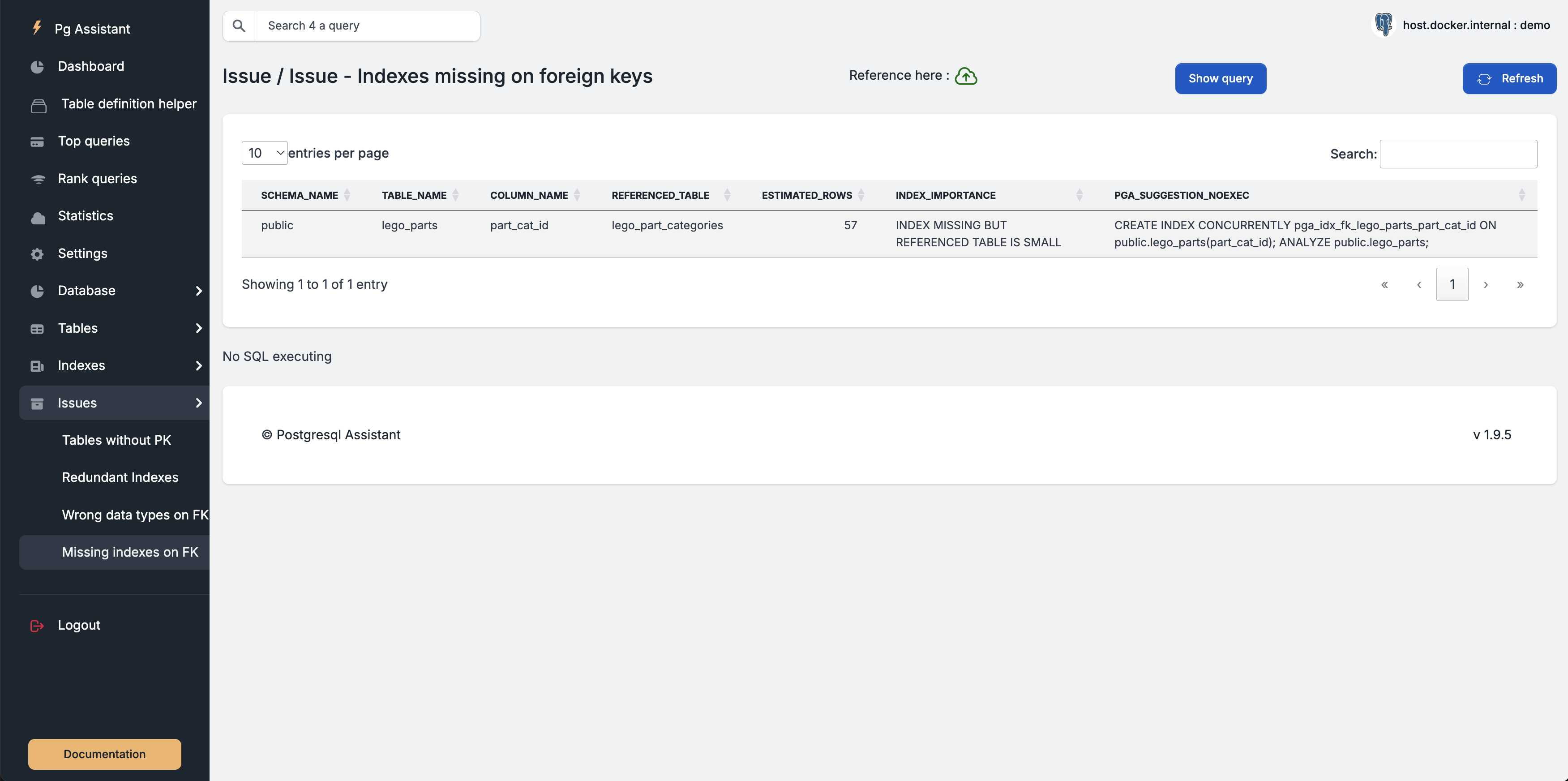What is all about
When you create a foreign key, you should always create an index on it (and NO, postgres do not create automaticly an index for you).
Should You Always Index Foreign Keys in PostgreSQL?
Foreign keys are an essential part of relational database design. They ensure referential integrity by linking rows between tables. But when it comes to performance, many developers wonder:
“Should I always add an index to a foreign key column?”
Short Answer: Almost always, yes.
Creating an index on a foreign key is not required by PostgreSQL to enforce the constraint. However, it’s highly recommended in most real-world use cases, especially when the parent table is subject to:
- DELETE operations
- UPDATEs to the primary/unique key
- Frequent JOINs using the foreign key
Without an index, PostgreSQL may have to perform sequential scans on the child table, leading to major performance issues as data grows.
When Indexing is Critical
On Delete / Update
PostgreSQL must check for dependent rows in the child table. Without an index, this check results in a full table scan.
Frequent Joins
If your queries often join the parent and child tables on the foreign key, an index helps PostgreSQL use nested loop joins or hash joins efficiently.
🧘 When You Might Not Need an Index
- The child table is very small
- The foreign key column is rarely filtered or joined
- The foreign key is almost never updated or deleted
- You’re doing bulk loads and want to delay index creation for performance
Even then, you may want to add it later once data grows.
Example
CREATE TABLE orders (
id SERIAL PRIMARY KEY,
customer_id INT REFERENCES customers(id)
);
-- Index to improve FK lookups
CREATE INDEX idx_orders_customer_id ON orders(customer_id);
References
- Cybertec – Foreign Key Indexing and Performance in PostgreSQL
- PostgreSQL Documentation – Foreign Key Constraints
How pgAssistant can help you ?
On the main Dashboard, you may see in the “Issues on schema” a line with a red icon : Missing index on foreign keys

Just click on it !
pgAssistant will show you the list of missing indexes on foreign keys and gives you a SQL command to create the missing index.

The column INDEX_IMPORTANCE can take this values :
| VALUE | COMMENT |
|---|---|
| REFERENCED TABLE IS NOT ANALYZED ! | If the referenced table is not analyzed. You shoud run an ANALYZE on the table |
| INDEX STRONGLY RECOMMENDED | When the referenced table has more than 1000 rows |
| INDEX RECOMMENDED (moderate size) | When the referenced table has more than 500 rows |
| INDEX MISSING BUT REFERENCED TABLE IS SMALL | When the referenced table has less than 500 rows |
pgAssistant leverages the n_live_tup column from the pg_stat_user_tables system view to estimate the number of live tuples (rows) in the referenced table. This statistic is maintained by PostgreSQL and updated during ANALYZE myTable or VACUUM ANALYZE, either manually or via autovacuum, depending on configuration.
If you need to ANALYZE a table, you can use any Postgresql client or you can use pgAssistant : go to search query and search for analyze. You should see the ‘Launch analyze on a table’ query. Execute it.
Never forget to analyze a table after an indexe creation …
You should notice that pgAssistant always use the SQL command : create index CONCURRENTLY myindex.
If you wonder why, please take a look at this documentation